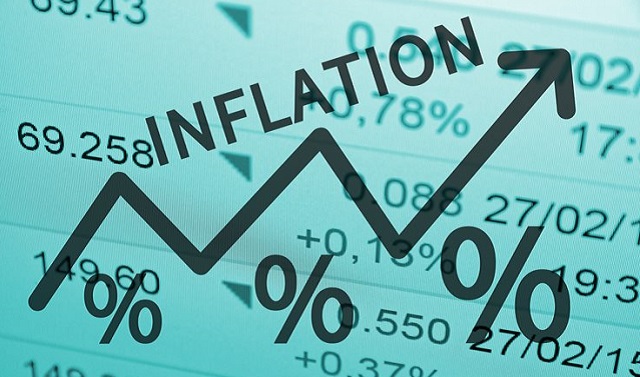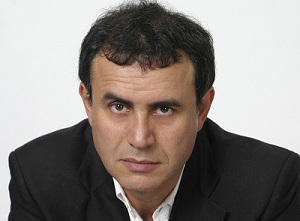
Why that will lead to larger fiscal deficits, more debt monetisation, and higher inflation in future
COMMENT | Nouriel Roubini | Inflation rose sharply throughout 2022 across both advanced economies and emerging markets. Structural trends suggest that the problem will be secular, rather than transitory. Specifically, many countries are now engaged in various “wars” – some real, some metaphorical – that will lead to even larger fiscal deficits, more debt monetisation, and higher inflation in the future.
The world is going through a form of “geopolitical depression” topped by the escalating rivalry between the West and aligned (if not allied) revisionist powers such as China, Russia, Iran, North Korea, and Pakistan. Cold and hot wars are on the rise. Russia’s brutal invasion of Ukraine could still expand and involve NATO. Israel – and thus the United States – is on a collision course with Iran, which is on the threshold of becoming a nuclear-armed state. The broader Middle East is a powder keg. And the U.S. and China are facing off over the questions of who will dominate Asia and whether Taiwan will be forcibly reunited with the mainland.
Accordingly, the U.S, Europe, and NATO are re-arming, as is pretty much everyone in the Middle East and Asia, including Japan, which has embarked on its biggest military build-up in many decades. Higher levels of spending on conventional and unconventional weapons (including nuclear, cyber, bio, and chemical) are all but assured, and these expenditures will weigh on the public purse.
The global war against climate change will also be expensive – for both the public and private sectors. Climate-change mitigation and adaptation could cost trillions of dollars per year for decades to come, and it is silly to think that all these investments will boost growth. After a real war that destroys much of a country’s physical capital, a surge of investment can of course produce an economic expansion; nonetheless, the country is poorer for having lost a large share of its wealth. The same is true of climate investments. A significant share of the existing capital stock will have to be replaced, either because it has become obsolete or because it has been destroyed by climate-driven events.
We are also now waging a costly war against future pandemics. For a variety of reasons – some of them related to climate change – disease outbreaks with the potential to become pandemics will become more frequent. Whether countries invest in prevention or deal with future health crises after the fact, they will be incurring higher costs on a perpetual basis, and these will add to the growing burden associated with societal aging and pay-as-you-go health-care systems and pension plans. Already, this implicit unfunded debt load is estimated to be close to the level of explicit public debt for most advanced economies.
Moreover, we will increasingly find ourselves fighting a war against the disruptive effects of “globotics”: the combination of globalisation and automation (including artificial intelligence and robotics) that is threatening a growing number of blue- and white-collar occupations. Governments will be under pressure to help those left behind, whether through basic-income schemes, massive fiscal transfers, or vastly expanded public services.
These costs will remain large even if automation leads to a surge in economic growth. For example, supporting a meager universal basic income of $1,000 per month would cost the U.S. about 20% of its GDP.
Finally, we also must fight an urgent (and related) war against rising income and wealth inequality. Otherwise, the malaise afflicting young people and many middle- and working-class households will continue to drive a backlash against liberal democracy and free-market capitalism. To prevent populist regimes from coming to power and pursuing reckless, unsustainable economic policies, liberal democracies will need to spend a fortune to reinforce their social safety nets – as many are already doing.
Fighting these five “wars” will be expensive, and economic and political factors will constrain governments’ ability to finance them with higher taxes. Tax-to-GDP ratios are already high in most advanced economies – especially Europe – and tax evasion, avoidance, and arbitrage will further complicate efforts to increase taxes on high incomes and capital (assuming such measures could even get past the lobbyists or secure buy-in from center-right parties).
Thus, waging these necessary wars will increase government spending and transfers as a share of GDP, and without a commensurate increase in tax revenues. Structural budget deficits will grow even larger than they already are, potentially leading to unsustainable debt ratios that will increase borrowing costs and culminate in debt crises, with obvious adverse effects on economic growth.
For countries that borrow in their own currencies, the expedient option will be to allow higher inflation to reduce the real value of long-term fixed-rate nominal debt. This approach functions as a capital levy against savers and creditors in favour of borrowers and debtors, and it can be combined with complementary, draconian measures such as financial repression, taxes on capital, and outright default (for countries that borrow in foreign currencies or whose debt is largely short-term or indexed to inflation). Because the “inflation tax” is a subtle and sneaky form of taxation that doesn’t require legislative or executive approval, it is the default path of least resistance when deficits and debts are increasingly unsustainable.
I have focused primarily on demand-side factors that will lead to higher spending, deficits, debt monetisation, and inflation. But there are also many medium-term negative aggregate supply shocks that could add to today’s stagflationary pressures, increasing the risk of recession and cascading debt crises. The Great Moderation is dead and buried; the Great Stagflationary Debt Crisis is upon us.
******

Nouriel Roubini, Professor Emeritus of Economics at New York University’s Stern School of Business, is Chief Economist at Atlas Capital Team and the author of Megathreats: Ten Dangerous Trends That Imperil Our Future, and How to Survive Them (Little, Brown and Company, 2022).
Copyright: Project Syndicate, 2022.
 The Independent Uganda: You get the Truth we Pay the Price
The Independent Uganda: You get the Truth we Pay the Price



